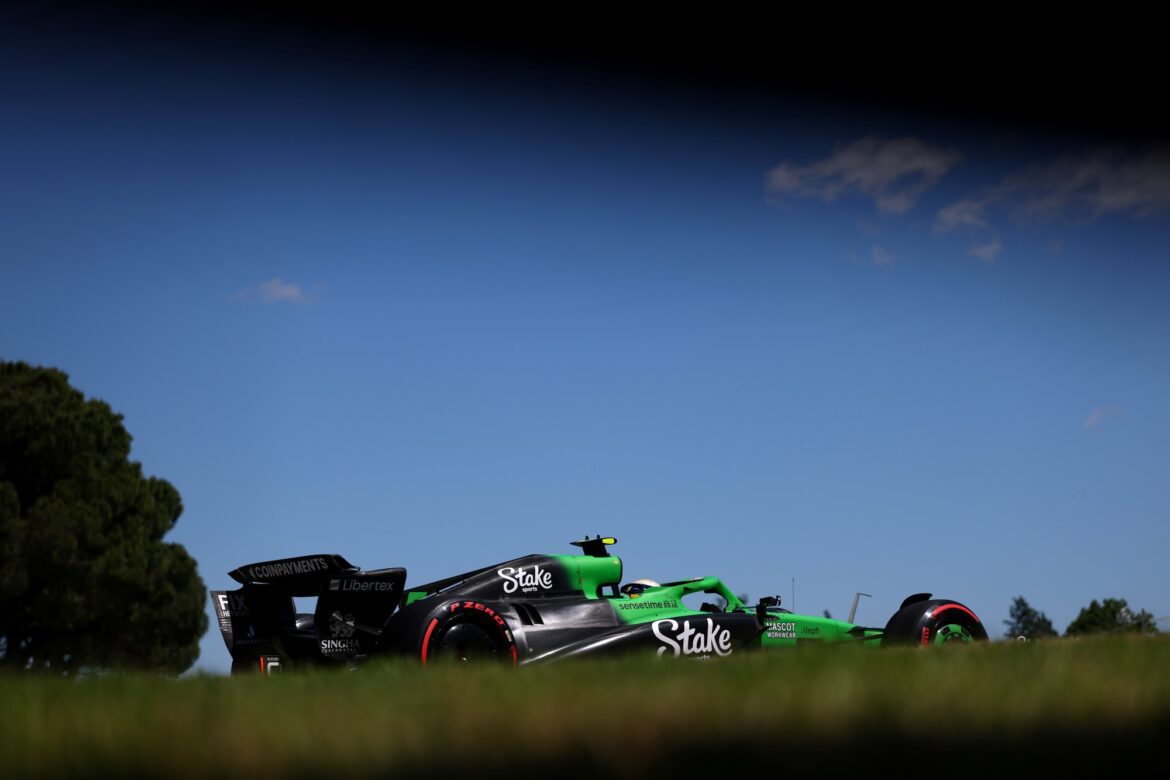Gabriel Bortoleto’s Performance at the Emilia-Romagna Grand Prix: A Closer Look
Gabriel Bortoleto, the young Brazilian driver, made headlines during the qualifying session for the Emilia-Romagna Grand Prix of Formula 1. Starting from the 14th position, Bortoleto showcased his skills and determination on the track, navigating through a series of challenges that marked the session. This article delves into the details of Bortoleto’s performance, the conditions during the race, and the overall atmosphere of the event.
The Qualifying Session Dynamics
The qualifying session kicked off amidst a backdrop of uncertainty, as the FIA was deliberating on whether the session would transition to Q2. Despite the initial confusion, Bortoleto successfully progressed, clocking a time of 1 minute and 16.260 seconds, securing his spot in the first phase of the qualifying rounds. The weather conditions on the day were relatively mild, with only a 10% chance of rain, which allowed the drivers to focus on their performance without the added complication of wet conditions.
The temperature during the session hovered around 22°C, while the asphalt reached a scorching 44°C. The humidity level was approximately 30%, contributing to a challenging yet manageable environment for the participants. As the countdown to the session began, Bortoleto, piloting car #5, wasted no time in hitting the track alongside prominent figures such as Lewis Hamilton, Lance Stroll, Fernando Alonso, Oliver Bearman, and Nico Hülkenberg.
In the early stages of the session, Bortoleto recorded a competitive lap time of 1 minute and 16.698 seconds using soft tires. Being one of the first drivers to complete a lap, he briefly held the top position before being overtaken by established drivers like Alonso and Carlos Sainz. This initial burst of speed demonstrated Bortoleto’s capability to compete with some of the sport’s best.
Unexpected Interruptions
The session took an unexpected turn just over 12 minutes in when Yuki Tsunoda experienced a significant crash, leading to the deployment of a red flag. At this juncture, Bortoleto was positioned sixth on the timing sheet. The red flag paused the action, allowing teams to regroup and strategize for the remaining minutes of the qualifying session.
As the session resumed, drivers rushed back onto the track to make the most of the remaining time. However, as laps were completed, Bortoleto’s position began to slip, and he found himself in 17th place with just three minutes left on the clock. Despite the pressure, he remained focused and determined to improve his standing.
In a last-ditch effort to secure a better position, Bortoleto was on track to beat Liam Lawson’s time, who was in 15th place at that moment. Other competitors below the cutoff line included Nico Hülkenberg, Oliver Bearman, and Esteban Ocon, all of whom were aiming to make their mark in the session.
The Climax of the Session
The tension heightened as the session approached its conclusion. In a dramatic turn of events, Franco Colapinto suffered a heavy crash that once again brought out the red flag. This incident occurred just as Bearman had improved his time, potentially pushing Bortoleto out of the qualifying range. Race control was tasked with reviewing whether Bearman’s lap was completed before the red flag was waved.
After a lengthy deliberation period exceeding 16 minutes, during which the broadcast coverage was limited, the race stewards concluded that Bearman had indeed crossed the line while the red flag was in effect. Consequently, Bortoleto was granted advancement to Q2, marking a significant achievement for the young driver.
Transition to Q2
In a show of confidence and readiness, Bortoleto was the first driver to line up at the exit of the pit lane when the session resumed. This strategic move allowed him a clear track as soon as the pit lane opened. On his first lap in Q2, he clocked a time of 1 minute and 16.683 seconds, demonstrating his ability to adapt and perform under pressure.
With just over four minutes remaining, all drivers were momentarily stationary before they collectively surged out onto the track again. At that moment, Bortoleto was positioned 14th, trailing the fastest driver by 1.442 seconds, and was just 0.6 seconds behind Kimi Antonelli, who was in the 10th position.
As the clock ticked down, Bortoleto managed to improve his lap time significantly, propelling himself to 12th position with a time of 1 minute and 16.260 seconds. This performance placed him ahead of notable competitors such as Pierre Gasly, Alexander Albon, and Colapinto, who, despite advancing, did not participate in Q2.
Ultimately, Bortoleto secured the 14th position on the grid, finishing 10.62 seconds behind Carlos Sainz, who had the fastest time and advanced to Q3. This marked a notable milestone for Bortoleto, as it was his third time advancing to Q2 in the current season.
Conclusion of the Qualifying Session
Bortoleto’s performance in the Emilia-Romagna Grand Prix qualifying session was a testament to his skill and resilience as a driver. By navigating through the complexities of the session, he not only secured a spot in Q2 but also demonstrated his potential to compete at a high level in Formula 1.
The atmosphere during the event was electric, with fans eagerly anticipating the race. Bortoleto’s journey is one of many in the competitive world of Formula 1, where each qualifying session presents a unique set of challenges and opportunities for drivers to showcase their talents.
As Bortoleto prepares for the race ahead, the excitement surrounding his career continues to grow, with fans and analysts alike keenly observing his progress on the track. The Emilia-Romagna Grand Prix is not just a race; it is a platform for emerging talents like Bortoleto to make their mark in the world of motorsport.
